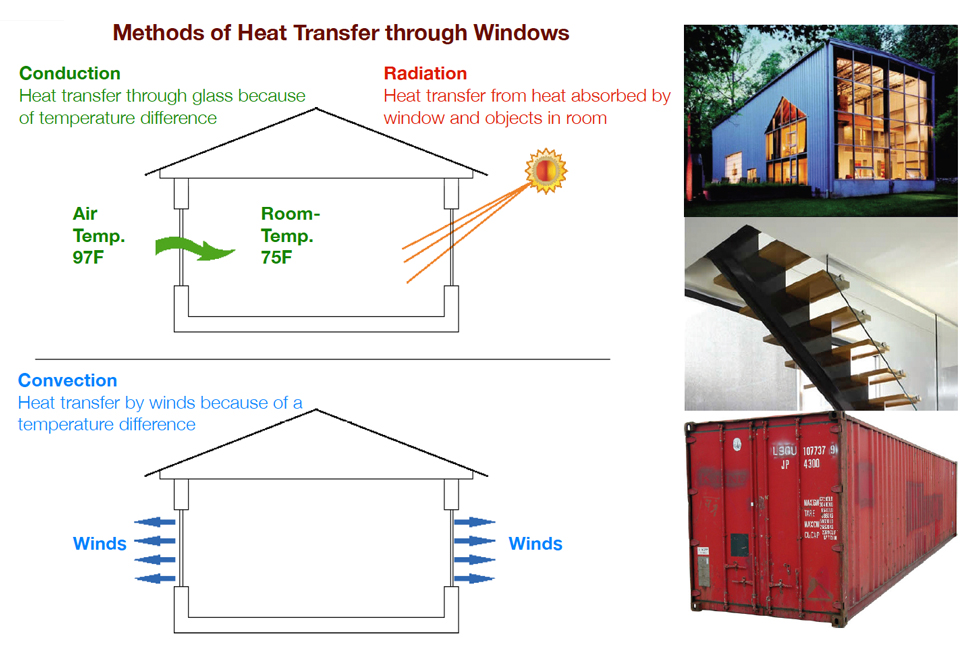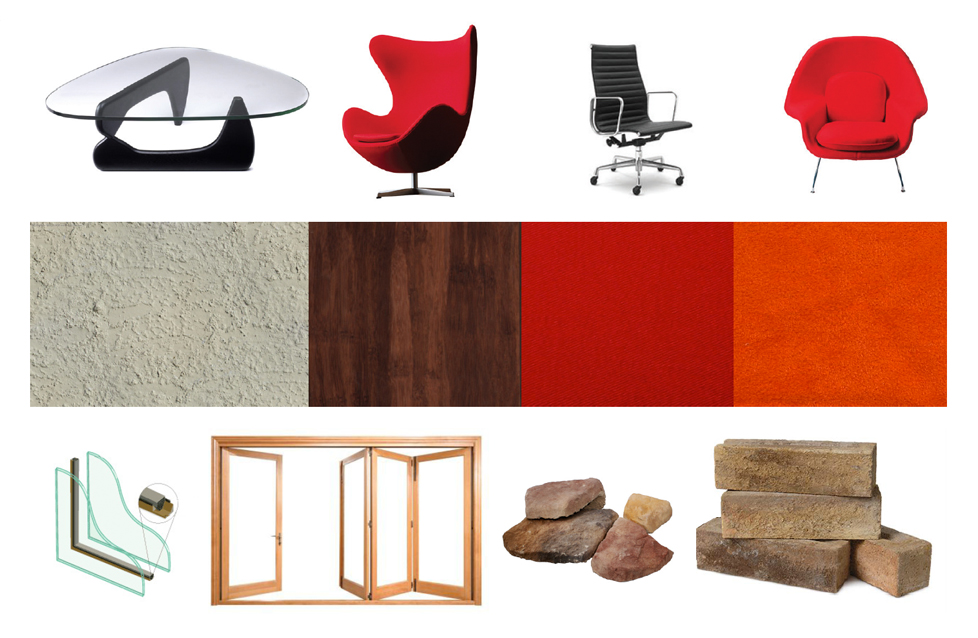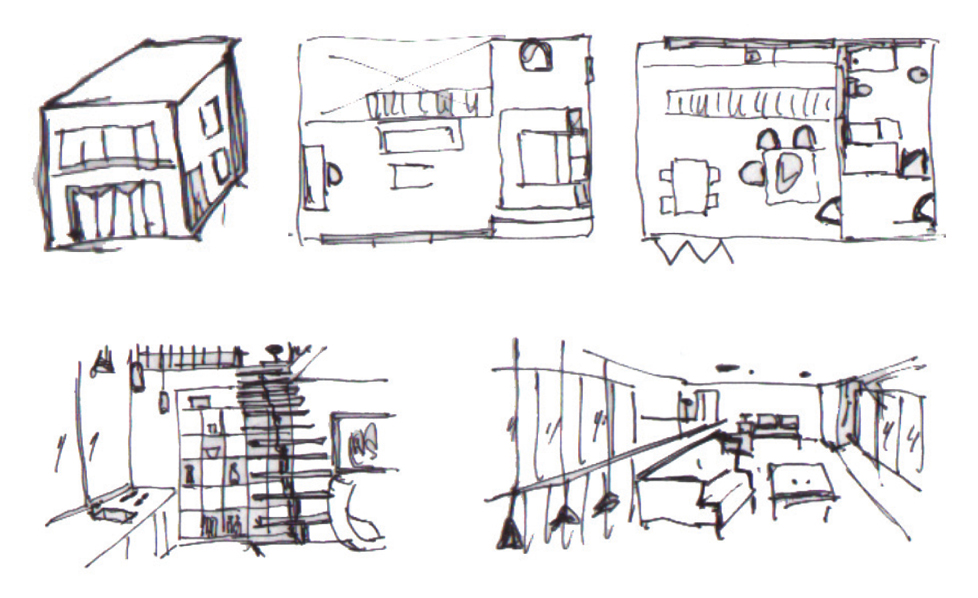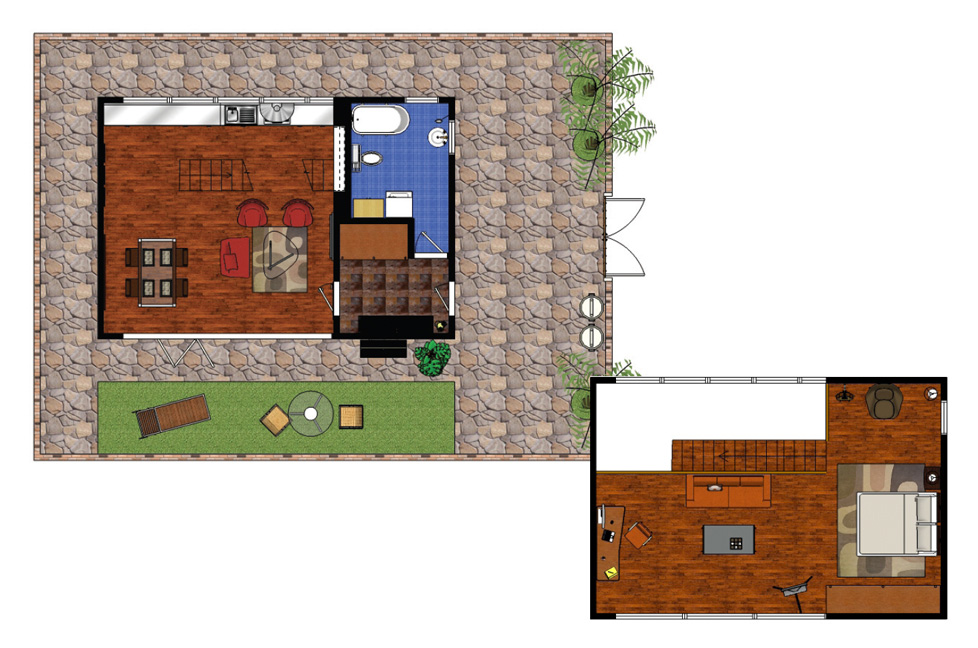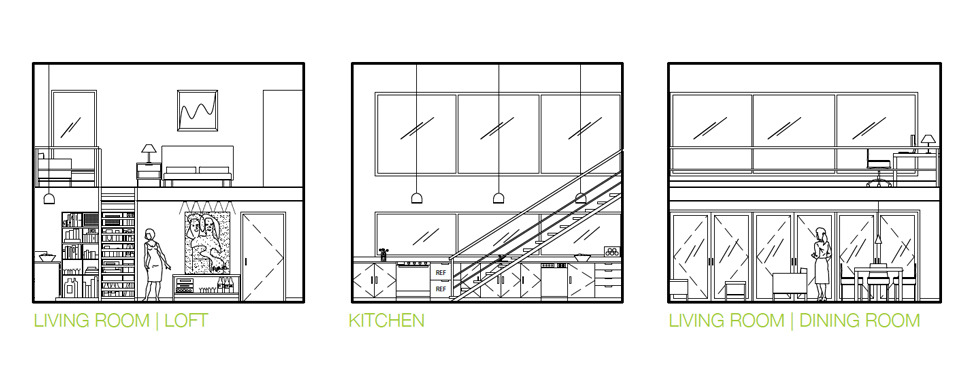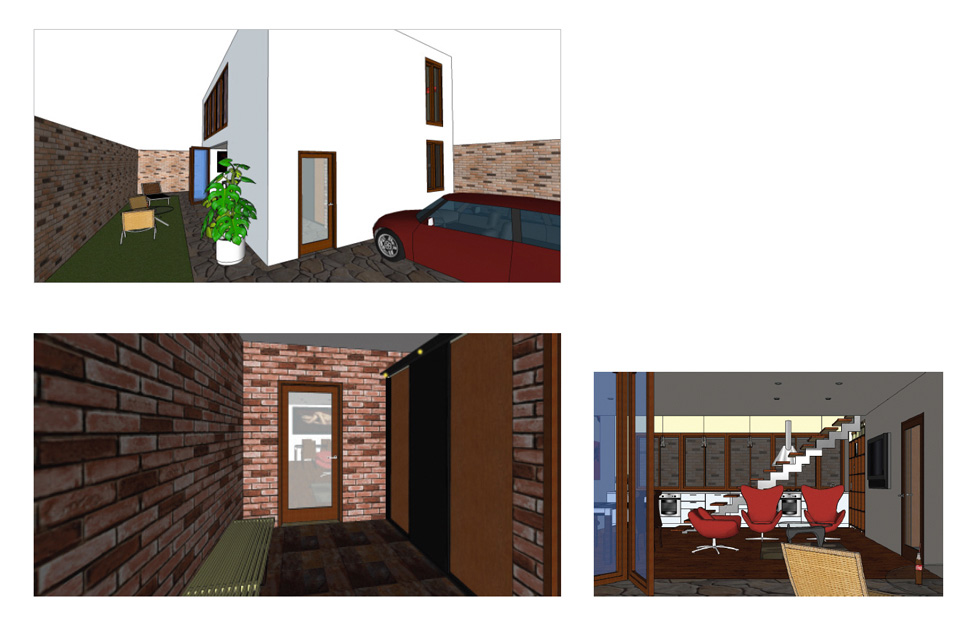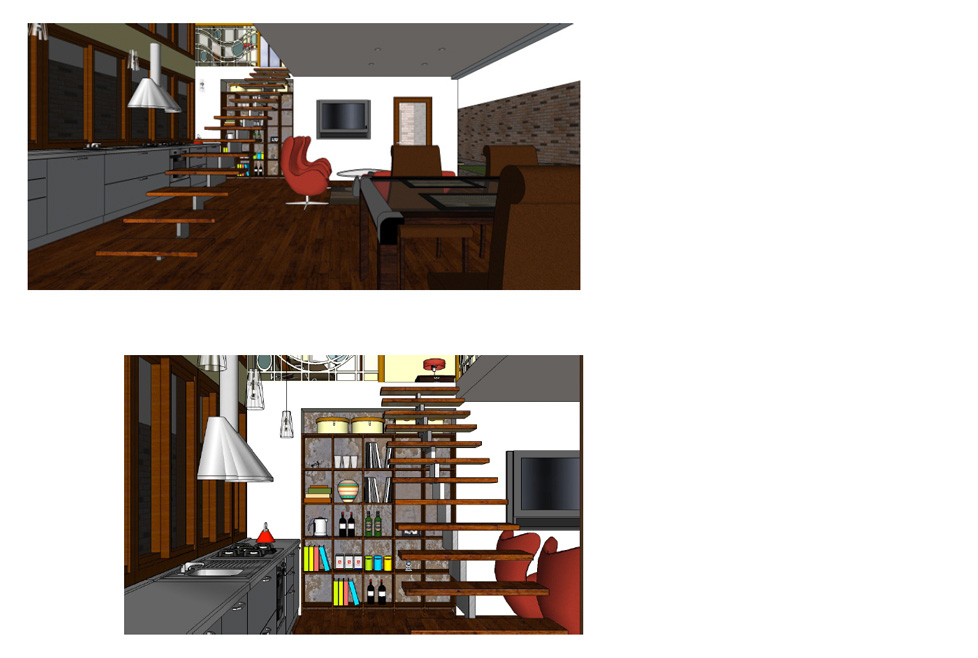House 2030
An artist's home; By the year 2030, we will have a much greater reliance on recycled materials and clients will be environmentally
conscious. Thus, all the materials used in the construction and design are recycable. To keep cost down and help minimize environmental impact, clay is used due to its unique thermal properties. Clay bricks provide thermal mass, reducing the occupants's reliance on heating and cooling systems.
Inspiration.
Materials & Furniture.
Sketches.
Birdseye view.
The main concept was to design a tasteful space that is cozy and comfortable fo its inhabitants. Environmentally friendy materials were used from top to bottom.
Interior elevations.
Perspective; thermal mass moderates the effects of daily changes in temperature, so the house retains heat in winter and is shielded against summer heat. Direct sunlight heats the clay, keeping the living space cozy during winter nights.
Living room & kitchen; for those hot summer days, the house is designed with an abundance of windows keeping the inhabitat cool when open. The use of glass brings in natural light.
Loft; Glass like Pilkington Solar E Plus and Low E are low emissivity, reducing unwanted heat gain in summer but warmth to touch in winter. The glass is coated with a special film to providing occupants with UV Ray protection (a characteristic that will be increasingly important as global warming increases ozone levels).
Architectural models for a number of student projects from the Art Institute of Seattle.
View more.
